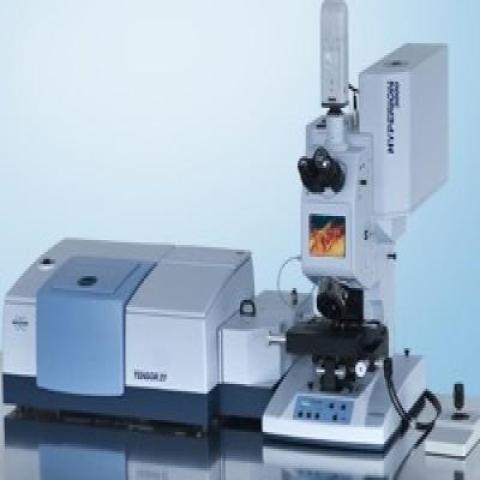
External users: registration to be carried out only through I-STEM portal
Additional information about sample and analysis details should be filled in the pdf form provided in the I-STEM portal under “DOWNLOAD CSRF”
Internal users (IITB): registration to be carried out only through DRONA portal
Additional information about sample and analysis details should be filled in the pdf form provided here.
.
Category
- Microscopy and Imaging » Infrared/ Raman Imaging
- Spectroscopy and Spectrometry » Infrared Spectrometer
Booking Details
Facility Management Team and Location
Facility Features, Working Principle and Specifications
FTIR Imaging is a complimentary Imaging tool and is a very versatile analytical technique for spectrochemical imaging. The advantage of chemical imaging compared to other sensor technologies is the ability to analyze the spatial distribution of the component materials in blends, granules or finished dosage forms. Many analysts need to obtain the molecular information from an area of a sample to see a picture of the distribution of molecules or functional groups. These chemical called IR images provide information, that is highly complementary to images obtained from techniques such as Scanning Electron Microscopy (SEM), Atomic Force Microscopy (AFM) and visible light microscopy. SEM and AFM have each a much higher spatial resolution than FTIR imaging, down to less than 1 nm. These techniques provide information about surface properties and in some cases, elements distribution, but they do not provide information about molecular composition. The chemical imaging approach has the potential to monitor processes to reveal the extent of ingredient blending, particle size distributions, agglomeration of component particles and the presence of polymorphs, hydrates and other trace contaminants.
Fourier Transform Infra-Red (FTIR) Spectroscopy is well proven as a sensitive, rapid technique for material characterization of various samples for molecular species in a broad range of materials. By coupling the FTIR to a microscope accessory, measurements on small sample can be routinely carried out, down to few micron area. Applications include the identification of trace contaminants, the analysis of failure modes and characterization of production defects.
Both FT-IR and FT-NIR take advantage of the fact that the functional groups of every module generate a characteristic absorption or transmission spectral fingerprint that definitely identifies that chemical compound. FTIR and FT-NIR are quickly becoming the preferred compound testing technologies because of their speed, accuracy and reliability. While infrared microscopy provides the highest sensitivity and widest spectral range for small area FTIR measurements, collecting microscopic chemical picture of your sample can be time consuming, depending on the data collection and sample size requirements. Unlike IR microscopes that employ a single detector measuring a single point at a time, FTIR imaging systems contain multi-element detectors, producing IR images almost as fast as an optical microscope presents a visible image.
Sample Preparation, User Instructions and Precautionary Measures
1. Provide solid samples in powder form. Minimum amount required 1-2 mg.
2. Samples may be in liquid form. Minimum amount required 0.1 ml.
3. Samples can be submitted as thin films
FITR-Imaging System Charges excluding GST:
|
